#fukugawa
Explore tagged Tumblr posts
Text









8 notes
·
View notes
Text
The Parades
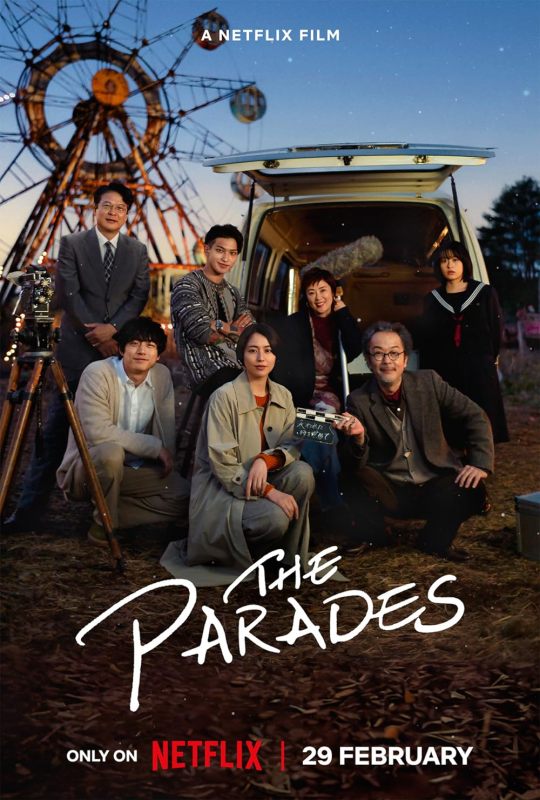
Movies watched in 2024
The Parades (2024, Japan)
Director & Writer: Michihito Fujii
Mini-review:
Wow, what a beautiful film. It's true that there are similar stories out there, but this one is told with such warmness and gentleness that I couldn't help but fall in love with it. If anything, my only complain is that it should have been a miniseries or something like that, cause I wanted to spend more time in this world and with these characters. But truly, this star-studded cast does one hell of a job, even the actors with less scenes or smaller roles. And the cinematography is simply stunning. The whole movie looks gorgeous, to the point of being awe-inspiring, and it has quite a few unforgettable shots. Oh, there are also a couple of triggering moments, so be careful with that. But yeah, I loved The Parades so, so much. I'll have to look up more of this director's work.
#the parades#the parades 2024#the parades movie#michihito fujii#masami nagasawa#nagasawa masami#kentaro sakaguchi#sakaguchi kentaro#ryusei yokohama#yokohama ryusei#nana mori#mori nana#tetsushi tanaka#shinobu terajima#lily franky#akari takaishi#yuina kuroshima#ayumu nakajima#takuya wakabayashi#mai fukugawa#daiken okudaira#japanese movies#japanese movie#drama#fantasy#tearjerker#cinemetography#movies watched in 2024
20 notes
·
View notes
Text

6 notes
·
View notes
Text
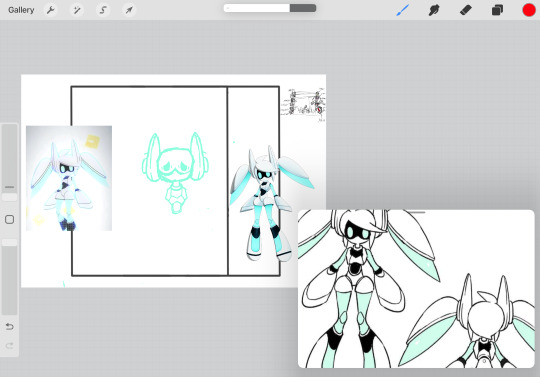

A little wip of my first nnd compass fanart where voidoll is hiding behind two sliding doors while the corrupted original 9 are behind those doors, wanting to get in the room to kill voidoll
and the second is just a poorly drawed sketch of what the final image may look like
it’s going to be an au called the corrupted au where voidoll has to save everyone after being corrupted by bugdoll
I technically stole the main points of the pokerus au by @monsoon-of-art aka @monster-mons and smash ultimate’s world of light
#nnd compass#art wip#Compass corrupted au#Ririka#juumonji atari#Luciano#marcos’55#Fukugawa matoi#Ouka Tadaomi#Soubiki noho#Nnd compass jeanne#Justice hancock
4 notes
·
View notes
Note
Drats my anti Leo agenda (pushing him into a pond) has been foiled twice now!!!

"Maybe you should try something different. Like, have you ever heard such a desperate cry for attention? Did you pull girls' hair when you liked them as a kid too?
"If you wanna see me soaking wet so bad you can check my Insta--pretty sure I have pics on there from like last summer when Sho and I went to Fukugawa Hachiman Festival and ended up spraying each other with more water than we got on the mikoshi~"
#present: leo#answers#anonymous#((i considered that sho was helping carry the mikoshi but they're both from shibuya so he probably wouldn't be local enough for it))#((but then i had the image in my head of them with buckets or water guns and leo theowing a bucket on sho instead))#((and they ended up chasing and soaking each other and since it was like a million degrees mid-august and leo had a waterproof case#((it was just a good time all around and they were soaking wet and having a nice time))
10 notes
·
View notes
Text












May 5th Photos: Asakusa & Fukugawa Edo Museum
3 notes
·
View notes
Text
May 5th - Trip Around Asakusa
Sooo, today basically marked my first full day of my Japanese trip where me with my friends explored the Buddhist temple named Sensō-ji, and we also visited the Fukugawa Edo Museum to see a glimpse into what feudal Japan looked like. And of course, to not absolutely wreck our morale and strength, we had a lunch break where we could go wherever you want. For me, I chose to go with our tour guide Akane-san to a tempura-don place because she's a local in Japan, and I was more interested in the local restaurants compared to the street vendors leading to the main temple. While enjoying our food, we just talked about how interesting the difference in our culture is, but mainly the way we eat and how we treat our meals differently. Then later in the evening, we got to go to a Shabu-Shabu restaurant near our hotel where the foods there were fantastic, as usual, and I got to also enjoy the round drinks with other people. More importantly for the overall trip in Japan, however, is that we tried to navigate Japan using their excellent subway system. Despite the horrific navigation map that is available for everyone to interpret (Spoiler: none of us did), Google Maps was surprisingly easier than I thought to use and navigate. It also clearly stated which stations we should enter and leave while also accurately where to find such stations. So overall, I would say this is a great start to our long trip ahead of us.


Academic Reflection:
Now, when it comes to the Buddhist temple, the first thing that stood out to me was there was a handwashing station (sorry, :( no picture). As indicated in the text "Contemporary Japanese Buddhist Traditions" by Elisabetta Porcu, there was a forced separation movement called shinbutsu bunri which was "the forced separation of Buddhism and Shinto." And so, this handwashing station, which served a purpose only in the Shinto religion, indicated that despite all these years, the separation is still apparent. Another thing to note is that like how the text indicated that lately these days, there have been "closed collaboration between religious groups and commercial enterprises", you also see many shops, stalls, and lantern lights with Japanese corporations that are meant to attract in visitors to help boost the temple relevancy and income. Although they are not in the big 4 categories mentioned in the text, it is still worth noting.
Now for the next stop, the Fukugawa Edo Museum, it stood out the most for me for how eerily similar it is to the reading "Chapter 7 - The Early Tokugawa Experience" by Hane and Perez. I think the part that stood out the most for me is really how frugal early Japanese society really is. In the text, it discussed how "merchants" were placed literally the lowest in society because of the "orthodox philosophy, Confucianism, [where] moneymaking was held in disdain." Looking around the replica houses, you never see any forms of gold, silver, or similar currency exchanges that were widely adopted in civilization abroad on the shores. For example, China valued their silver Yuanbao because it is a form of currency that were used for trade. However, the houses in Japan really only have agriculture produces, meat products (mainly seafoods), and sometime high-end products such as lacquerwares in tea houses. So unless if the wealth is hidden somewhere, there was no sign of wealth or overly extravagance as indicated by the quote.

2 notes
·
View notes
Text
May 6 - Asakusa / Fukugawa Edo Museum
Freewriting
For my first day in Tokyo, I woke up around 6AM (thank you jetlag) and reviewed the days readings before heading downstairs to eat breakfast with my group. Following breakfast, I attended the first class meeting before embarking to Asakusa by train. Asakusa temple was amazing, the size and intricacy of the temple and the surrounding structures was breath taking.
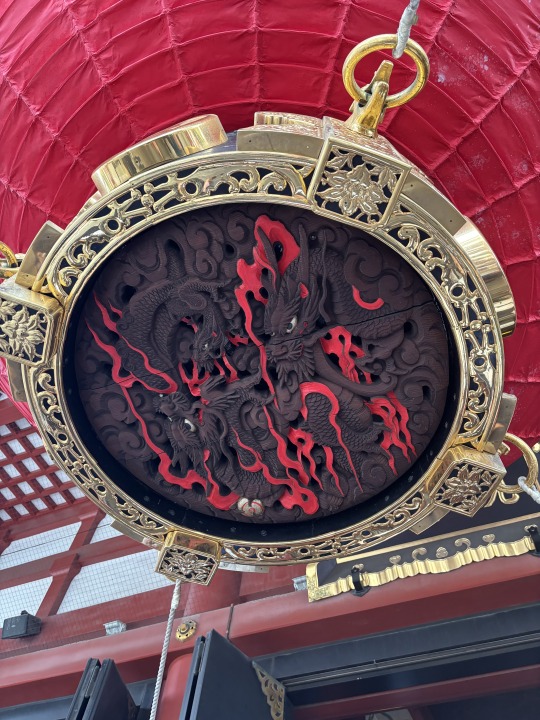
After looking around in some stalls around the temple, I paid 100 yen to have my fortune read. I received a bad fortune (not cool,) but I tied it to the designated to post to hopefully shake my bad luck. After looking around at the shrine for a bit longer, I went to lunch with some friends and had some great Japanese food (despite the meal taking way longer than we initially anticipated.) It was the type of restaurant where they prepare the food in front of you, but it was taking too long and we were going to be far too late returning to the group, but thankfully my (sub-par) Japanese speaking helped me to resolve the situation. After Asakusa, we went to the Fukugawa Edo Museum where a great tour guide told us all (but mostly Zachary) about life in the Edo period. After the days excursions were done I went to the Pokemon center, UNIQLO, Don Quijote and a really strange free art exhibit. I ended the night at a great pizza place down town where I had a really nice time with some friends. After a missed train or two, I ended up back at Hotel Edoya where I now sit writing this post.

Academic Reflection
The Asakusa temple is an ancient Buddhist temple which is extremely popular in and around Tokyo. The temple is that of Kannon, the god(ess) of mercy. Many aspects of the temple are indicative of Buddhist history and its influences. For example, the giant sandals meant to ward off demons or the statues that stand on either side of the temple's entrance which have obvious Greek influence. Unlike many other temples and shrines in Japan that are typically only visited in the event of someone's death, the Asakusa temple was bustling with commerce and activity. The influence of Buddhism on Japan's economy and religious beliefs was very evident at the temple. The deity (Kannon) presented at the temple seemed more in line with Mahayana sect of Buddhism. The Fukugawa Edo Museum presented an extremely accurate and realistic depiction of a small section of Edo era Tokyo. The entire "city block" was very reminiscent of the reading on premodern Japan. The businesses and homes presented real world examples of how many different individuals lived in the Edo period (aside from the Emperor, Shogun, and his Daimyos.) It is not hard to picture how Japan prospered under the Tokugawa's rule if these were the conditions at the time. The rice warehouse and the boathouse were particularly interesting and it helped that our guide was passionate about the material.
2 notes
·
View notes
Text
Monday, May 6th, 2024
Asakusa and Fukugawa Edo Museum
Today began early at 7:30 with breakfast at the Hotel Edoya buffet, many normal items including white rice, sausage, sliced chicken, smoked salmon, toast, and an assortment of other various Japanese dishes unbeknownst to me. Though I was able to try natto, which is a type of fermented soybean dish, that is sticky and foamy and tasted of coffee, not great but not as bad as people make it out to be.
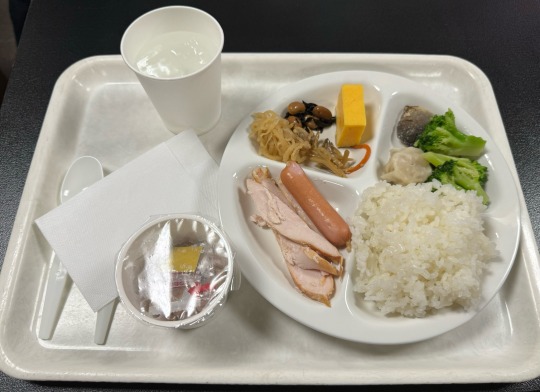
Following this meal we met on the rooftop conference room to discuss the day and meet our local guides. We then took the Japan Railway (JR) to get to Asakusa in order to see the Senso-Ji temple, which was built for the “Kannon Goddess of Mercy” and completed in 648 making it the oldest temple remaining in Tokyo.
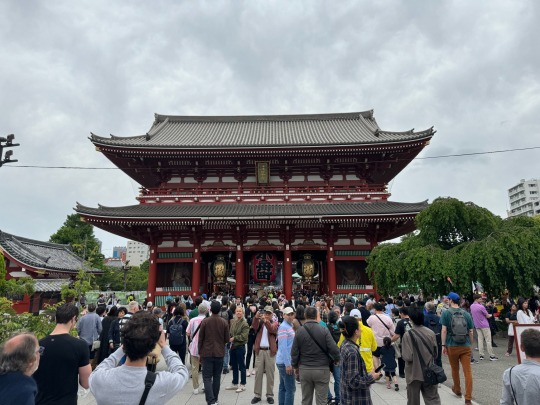
After this we went to get lunch and some friends and I decided on a random Okonomiyaki restaurant where I ordered a “Beef Tendon Curry” meal which was then turned into a pancake-esque dish cooked on the griddle directly in front of my seat. They also brought us 4 octopus tentacles and grilled them up despite us not ordering them still decided to charge us ¥418 per tentacle.
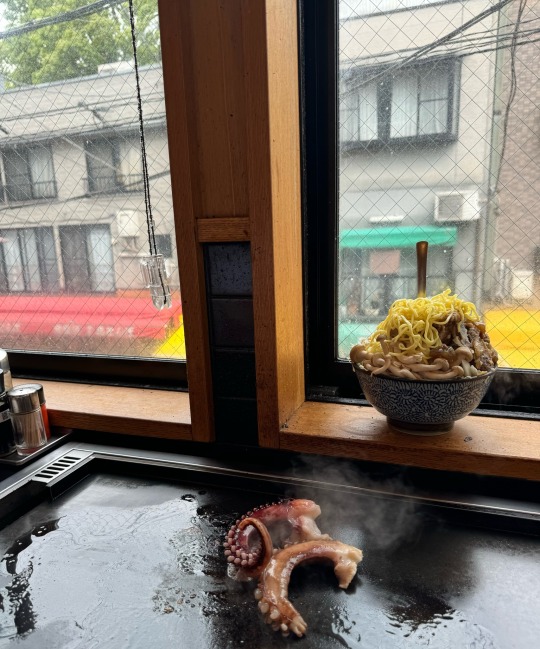
Following this we made our way to the Fukugawa Edo Museum, which consists of a large life size replica of a Tokyo neighborhood from around the year 1840, stylized to match the end of the Tokugawa period.
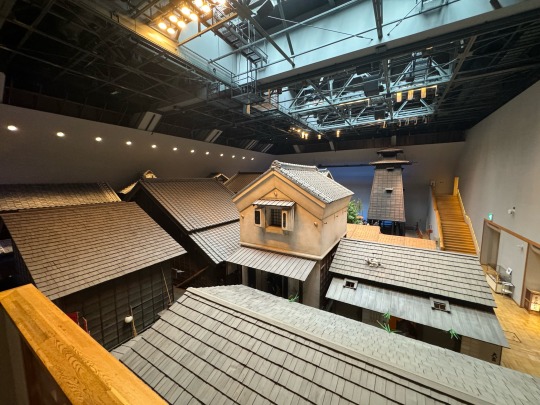
While here I met an 80 year old Japanese man who volunteered at the museum offering information to english tourists. While I was with a group of about 20 other students the elderly man decided to single me out for some reason and essentially give me a private tour in front of my entire group. Opting to not break eye contact with me or ask anyone else questions for some reason.
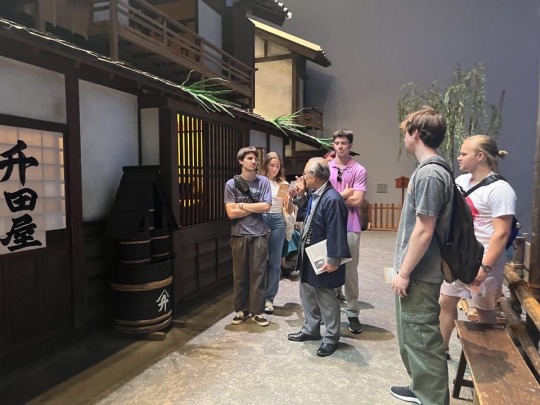
This was done by about 3pm and we were then free to do whatever we wanted for the rest of the day. Some friends and I decided to go to the Pokemon Center Tokyo DX, as we are all big fans of the Pokemon franchise. This place was pretty awesome and a consumerist dream. Pokemon galore and the amount of people in the store likely outnumber the total number of Pokémon in existence. Still was worth it and I got some merchandise to satisfy my capitalist cravings.
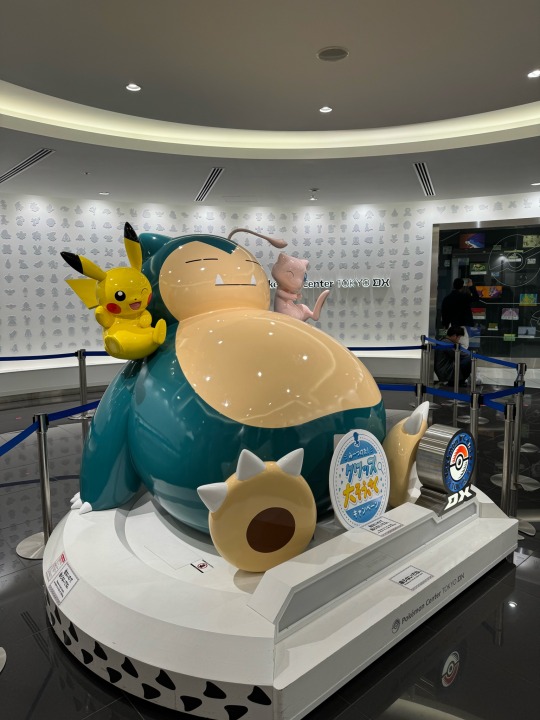
After the Pokemon Center we decided to walk to a store called “Don Quijote”, which is hard to describe unless you’ve seen or heard about it already. But it is essentially a discount store offering every single product you could possibly imagine, ranging from hair dryers to kit-kats to lingerie. Getting there was a bit of a struggle as the person who decided to lead the way typed in the wrong place into his navigation, thus leading us quite far out of the way and we ended up in Ginza, which is an upscale shopping district in Japan, though lucky for us there was another Don Quijote about .3 miles away so we opted to walk. On the way we stopped by a 7 story Uniqlo store and browsed around for a bit and bought some shirts.

We eventually made it to Don Quijote in Ginza and browsed for a while before getting a bit overwhelmed with the sheer size of the store and the breadth of product. After this we walked around Ginza for a bit and decided we were getting hungry for dinner and the consensus decided on Pizza for dinner which is an interesting choice for our 2nd meal ever in Japan but the urge for bread, marinara and cheese was too strong to be avoided. We hopped on the train bound for a Pizza place called “Savoy” in Azabujuban. Though not sure how but we ended up at the wrong place and apparently the location had been moved for a while at this point. I looked up the how far the actual restaurant was and it was only a 7 minute walk away so we made the journey. After getting to the restaurant and seeing a decent amount of people waiting we were unsure that a party of 6 would be able to get seated anytime soon, but nonetheless the staff pulled through and seated us in the “Platinum” room which was a private room with a table for 6. We all ordered Margherita pizza and scarfed it down as fast as it came out.

After this delectable meal we decided head back home as it was 8pm by this point and we were all exhausted. We went back to the train station and made our way back to the hotel to conclude the day.
Academic Reflection
Today’s readings focused on contemporary Japanese Buddhist traditions and detailed the arrival of Buddhism into Japan from China in the 6th century. This gave me a deeper understanding of how Buddhism spread throughout and eventually became the leading religion in Japan. I was able to see just how true this is with the touring of the Senso-Ji temple in Asakusa where I saw the sheer scale that 7th century Buddhist monks went to in order to practice their religion. Building a structure of that sheer size without any power tools must have been a logistical nightmare, and seeing it firsthand really showed me how dedicated they must have been to put so much time and effort into building something so complex. I was also interested to learn that the main purpose of most Buddhist temples is funerary services, which is also how they make most of their money. This was a bit shocking to me as most western religions tend to focus more on practicing the religion at the place of worship, which is not really the case for most Buddhists. Going to the Fukugawa Edo museum was a great way to almost step foot into 18th century early modern Japan. Which was characterized by urbanization, relatively high literacy rates, stable population, overall peace, and an enjoyment of arts and growing culture. In the readings about the early Tokugawa, it was quite shocking to see the seemingly widespread common theme of samurai and other devoted vassals committing hara-kiri upon the death of their lords. When the Shogun Iemistu died, 13 people committed hara-kiri which is shocking as I could not possibly imagine being so devoted to your leader that you are willing to take your own life at the news of their passing. After reading about this period, seeing a model of how this would have looked and actually walking through the buildings definitely helped to cement the reality of the past into my brain. Overall was a great educational experience and I appreciated my time spent there.
2 notes
·
View notes
Text
Happy (late) 35th birthday, Tom Laflin!
Characters of Tom Laflin:
Anubis from Sacrificial Princess and the King of Beasts
Page One from One Piece
Yuji Hitouji from the Sound Cadence dub of The Prince of Tennis
Yajirobe Ueno from Tribe Nine
Reiji Yamamoto from Shangri-La Frontier
Haruka Fukugawa from Lovely Complex
Demioros from The Fruit of Evolution
Yomotsuzaka from The Vampire Dies in No Time
Kasha from The Demon Prince of Momochi House
#crunchyroll#tom laflin#sacrificial princess and the king of beasts#one piece#the prince of tennis#shangri la frontier#lovely complex#sound cadence studios#tenipuri#the fruit of evolution#the vampire dies in no time#the demon prince of momochi house#birthday#txt post
3 notes
·
View notes
Text


"NO METAL! NO FUNK! NO HARD ROCK! JUST D-BEAT RAW PUNK! JUST DISCHARGE PUNK!"
PIC(S) INFO: Mega spotlight on Kōchi City, Japan-based D-beat/raw punk/raw noise band, DISCLOSE, performing live somewhere in Japan, undisclosed venue & location, c. 1995. 📸: Photo courtesy of Rafael Yaekashi. Note bassist Fukugawa rocking the same CRUCIFIX "Nine-teen Eighty Four" tee in both shots.
Dis nightmare still @#¢!*%$& continues!!
Sources: www.pixnoy.com/post/6825246236296910145012 (Pixnoy 2x).
#DISCLOSE band#DISCLOSE punk#DISCLOSE#Japanese D-beat#Japanese D-beat/Raw punk#D-beat#Discore#Japanese punk#Japanese hardcore punk#Rafael Yaekashi.#DISCLOSE 1995#CRUCIFIX punk#1995#D-beat/Raw punk#Raw punk#Kawakami#Hideki Kawakami#90s punk#90s hardcore#Dis-punk#Raw noise#Punk gigs#Rafael Yaekashi#Japanese hardcore#Anti-war#90s hardcore punk#DISCHARGE punk#D-beat Raw punk#Punk photography#Live gigs
0 notes
Text
Day 1: Asakusa and Fukugawa Edo Museum
To start Day 1, I got to go to Asakusa. This is a place I have actually been to 3 times now, but each time it is a completely different experience. This time it was crazy to see the crowds that the temple drew in because of Golden Week. There were a lot more people , food stalls, and decorations compared to when I came back in January. I was also lucky enough to draw the best fortune while at the temple! While I was unable to pray at the temple due to the long wait, I did manage to visit the Asakusa shrine next door. I learned about the shrine last time I came, but never found the time to go before it closed. This time I was able to go and buy some omamori (amulets). After visiting the temple, I went out to lunch with some friends to this tempura chain that was actually super delicious. I was surprised to find out that my order cost only $5!

Later in the day I visited the Fukugawa Edo Museum. This museum was a recreation of old Edo in the former Fukagawa ward of Tokyo, Japan. We were lucky to have an amazing tour guide who explained every detail that was incorporated into making the replica authentic. I unfortunately didn't get his name, but he really expanded on the background information we discussed in the morning about the Edo period. For example, we learned about the societal classes of the time, with samurais at the top and merchants at the bottom. However, when discussing the sale of fecal matter, there was a different grading system which was more based on diet. Of course diet depended on class, but I was surprised to find out that in terms of fecal matter grading, Female prostitutes ranked higher than samurai, since they ate better food and they were seen to be so beautiful. All in all, the museum was really interesting in all the innovations and systems that the people during the Edo period came up with in order to make use of all resources and combat persisting dangers like fires.

After the museum, we went to Kiyosumi Gardens nearby. The garden was breathtakingly beautiful, so much so that we spent extra time there just to explore the whole thing. I love the look of traditional Japanese gardens, so this was a real gem to find on the first day. I am looking forward to what else I will discover during this trip!
0 notes
Text
May 5 - Asakusa/Fukugawa Edo Museum pictures










1 note
·
View note
Text
May 5- Asakusa and Fukugawa Edo Museum
Today we want to Asakusa and the Fukugawa Edo Museum. I really liked the shrine we visited at Asakusa and doing the fortune telling. The shrine was very pretty and I liked the environment of the shops and the food. I got matcha mochi with red bean and it was so good! We tried to go to a really good ramen place for lunch but the line was too long so we went to a different place but we also had to wait awhile for that. It was delicious though and I ate a lot. I also loved the museum because we had a very kind and funny guide who took us around the museum and explained everything to us. He was very nice to talk to and very funny. He said we made him happy and were his favorite tour group! His English was very good and he took a lot of care in giving us a good experience. We got to take a picture with him at the end which is the first pic on this post! After the museum, me and a few others went to a very beautiful garden. It was so pretty and peaceful. There were a lot of turtles there too and they were so cute.
Academic Reflection:
It was really cool to see a Buddhist shrine in person after reading about the religion in the readings and how it originated and is still trying to be kept modern. In the readings it talked about how Buddhism has become more socially engaged to evolve with the world and increase engagement and I feel like this was shown to me when visiting the Asakusa shrine because of all of the shops there, the photos, etc. I loved experiencing the culture and religion first hand. Having had done the reading before visiting the Asakusa shrine helped me gain a deeper appreciation for the outreach attempts of Buddhism. Visiting the shrine really emphasized the idea in the readings that the temples are both spiritual and cultural hubs.
For the museum it was cool to see the prominence of Buddhism during this time period and how that was implemented into the households. As we toured the different buildings and houses in the Edo town, a lot of them had small Buddhist shrines in their households. This emphasized to me the influence that Buddhism had on societal practices at the time. Overall the readings helped me deeper appreciate the shrine and museum and those excursions helped me further understand the readings.


0 notes
Text
May 5th, Asakusa

Today our tour group went to the Asakusa shrine and it was phenomenal. There were these fortune telling boxes where you would pay a 100 yen coin ($0.68). It ended up being a good fortune that basically said “the things you want in life will happen, but don’t overindulge.” Much to think about regarding that. I also prayed at the temple and donated a coin as payment.
Small caveat but one giant thing I love about Japan, compared to the USA, is that we actually use the coins here. There are so many vending machines that take 100-300 yen to buy and the coins go up to it.

Our second trip was to the Fukugawa Edo museum. It had a reconstruction of part of a town from the Edo period and we met a nice elderly tour guide who spoke English and told us about the various lore about the houses, they fictional residents, and the historical accuracy of the town. They, for example, had a fire watchtower that would ring a bell to alert the townsfolk about a fire. With the houses having been made of mostly wood and paper, the threat of urban fires was very ever present.
Academic Reflection
Buddhism in Japan is very tied to funerary rites, and I learned this from this week's readings. One famous saying is that Japanese people are “Shinto in life, Christian in marriage, and Buddhist in death.” Another aspect of Japanese Buddhism, which stems from Mahayana Buddhism, is the importance placed on Boddhisattvas. Boddhisattvas are people who seek enlightenment and Buddhahood, yet view the importance of bringing the rest of society along with them on the path of enlightenment as more important than their own eventual position as Buddha. "In the Mahayana view, the path to nirvana was impossible without the inclusion of the perfection of others as well, an ideal expressed in the twin virtues of wisdom and compassion, which bodhisattvas need in equal measure to attain their goal" (Blum - Mayahana Buddhism).
The Edo period was one of great and all incompassing inequality and was a hierarchical society divided into strict classes, decided at birth. The hierarchy was such that nobility and samurai were at the top, peasants were at a distant second, townspeople were at third, and merchants were at the bottom. There also existed classless people, the hinnen and the eta. The eta were those who were employed in defiling occupations, like "slaughtering animals, butchering, and tanning hides," while the hinin were "inerant entertainers, beggars, scavengers, prostitutes, and cast-off commoners (Hane and Perez - Early Tokugawa). Back to my earlier topic of fire, Hane and Perez write, "In Edo alone there were eighty major fires during the Tokugawa period, adding seriously to the Bakufu’s financial burden. The conflagration of 1657 destroyed 60 percent of the city and killed 102,000 people" (Hane and Perez - Early Tokugawa). It was altogether a great day and an enjoyable first step in my journey studying Japanese culture!
1 note
·
View note
Text
May 5
We went to Asakusa today in the morning. It was quite busy and a little overstimulating, although I ended up getting used to it quickly! The highlight was the temple for sure. I ended up getting quite a lot of charms, especially for family.

It was very beautiful, and I did end up praying as well. Despite the amount of people, I really enjoyed the temple. It was also interesting that it used to be by an entertainment district. The giant sandals were the part i found most interesting, the purpose of keeping others out since a giant creature is implied to live there is really cool.
Next, we went to the Fukugawa Edo Museum

The houses were really interesting and I really enjoyed the textile collection they have. The fire tower and the recreation of the river was my favorite part. It’s interesting that because the houses were so flammable they had to have someone wait and watch for signs of fire. The houses did seem like they were made of quite thin material, and the streets were very tiny. I liked how we could use the same machine they used to make rice. It was also really cute how the village transitioned to day and night.
In terms of the readings,
For the initial temple, what I find interesting is that according to the first and second reading, while buddhism was large, after WW2, you can really tell that Buddhism has declined, and that people are not as religious anymore. I saw locals not taking the traditions very seriously, like the smoke. I also saw many people not praying when going up to the temple. It’s interesting that the religion is mostly associated with funerals, as the temples seem so full of life.
Stepping into a recreation like the one at the Fukugawa Edo Museum was a real connection to the historical details described in the third reading. Like the third reading explained, the Tokugawa period saw the flourishing of cities like Edo (essentially the capital). The museum's neighborhood setting would primarily depict the world of the chōnin, class of mostly artisans and merchants who ranked below peasants in the official hierarchy but often had more real wealth. Walking through the recreated streets, I saw workshops and shops clustered together, that showed how townspeople were often located in fixed sections of the city based on their trade. The tinier scale of some houses to me showed frugality, which was a key value promoted among townspeople and sometimes seen as a basis for good governance. The museum's atmosphere suggested the constant threat of fire, a major concern in Edo with its frequent devastating blazes. You could tell the fear of fire through the fire tower and the town being right next to the river. At this time, they had to have someone at all times watching the town to ensure that if a fire is started, the towns people are warned. That was the purpose of one of the buildings, which would house valuables and close up during fires. This experience allowed me to actually visualize the urban environment and the daily lives of the chōnin, with values of diligence and devotion to moneymaking, which you could tell by the outlay of the town which contributed significantly to Japan's later economic rise.
0 notes